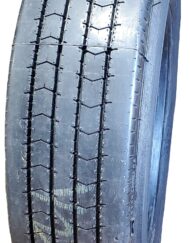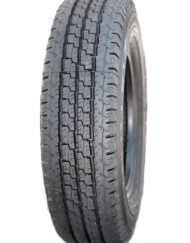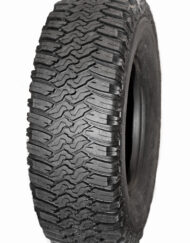Retread Tires Are One of The Greenest Products on The Market
When you picture going green, what comes to mind? Buying paper towels with post-consumer recycled material? Using aluminum cans, or glass bottles, over plastic? Or is it something else? Well, if you’re a driver, then one of the greenest things you can do is make sure the tires you’re riding around on are retreads.
What Is A Retread Tire?
If you look at your tire, it’s actually composed of several, distinct pieces. The one that most of us are concerned about, though, is the tread. The tread is the outer ring that actually makes contact with the road when you’re driving. The longer you drive on the same set of tires, the more worn down this tread gets (just like how the sole of a shoe can get worn down over time the more you walk in it). When your tread gets down to a certain level your tires will no longer grip the road properly, and that’s when they need to be replaced.
Just because a tire’s tread is worn down, that’s no reason to toss it into a landfill. Much like a boot that’s still perfectly good, even though its tread has been worn away, a tire can be re-treaded. When that happens the remains of the old tread are removed, and a new tread is put in its place. Much like re-soling a shoe, this allows a perfectly good tire to get back on the road.
Retread Tires Are One of the Greenest Products on The Market (Here’s Why)
Tires take a lot of resources to make, and they cover a lot of real estate in our landfills. Not only that, but though tires are made from rubber, they are also manufactured using a great deal of petrochemicals (which, in layman’s terms, means there’s a lot of oil that goes into the making of a tire, too). But how many resources get saved when a tire is retreaded?
Well, according to Recycling Product News, it takes roughly 22 gallons of oil to manufacture a single truck-sized tire. Most of that oil is used in the actual tire casing, which is largely kept intact, and re-used by the retreading process. A process which only takes about 7 gallons of oil. So the simple math is that, when you retread a tire instead of making an entirely new one, you save a minimum of 15 gallons of oil per tire. That is in addition to the benefits of keeping the old tire out of a landfill, which are pretty self-evident. Even the old tread that gets removed can be recycled, turned into playground padding or used in making products like rubber mats, doesn’t go to waste.
In addition to being better for the environment, though, retreading is also better for one’s pocket-book. A retreaded tire costs a fraction of what a new tire does (as retreading is less expensive than buying new), and that’s why the process has been in place for more than a century. However, with more people paying attention to the effects their purchases and decisions can have on the environment, retreading is now significantly more popular than it’s been in the past.
Just Another Way to Recycle
Retreading is a good way to save money, but it is also a way to save the environment. If we used less oil on a massive scale, then it would scale back demand for a limited resource, and it would put the brakes on the amount of garbage we send to our landfills. It would make out transportation greener, and it would mean we are getting the most out of the products we make.
For that kind of impact, though, we all need to work together.




